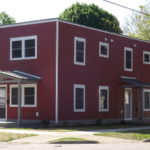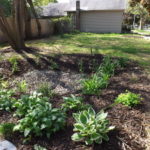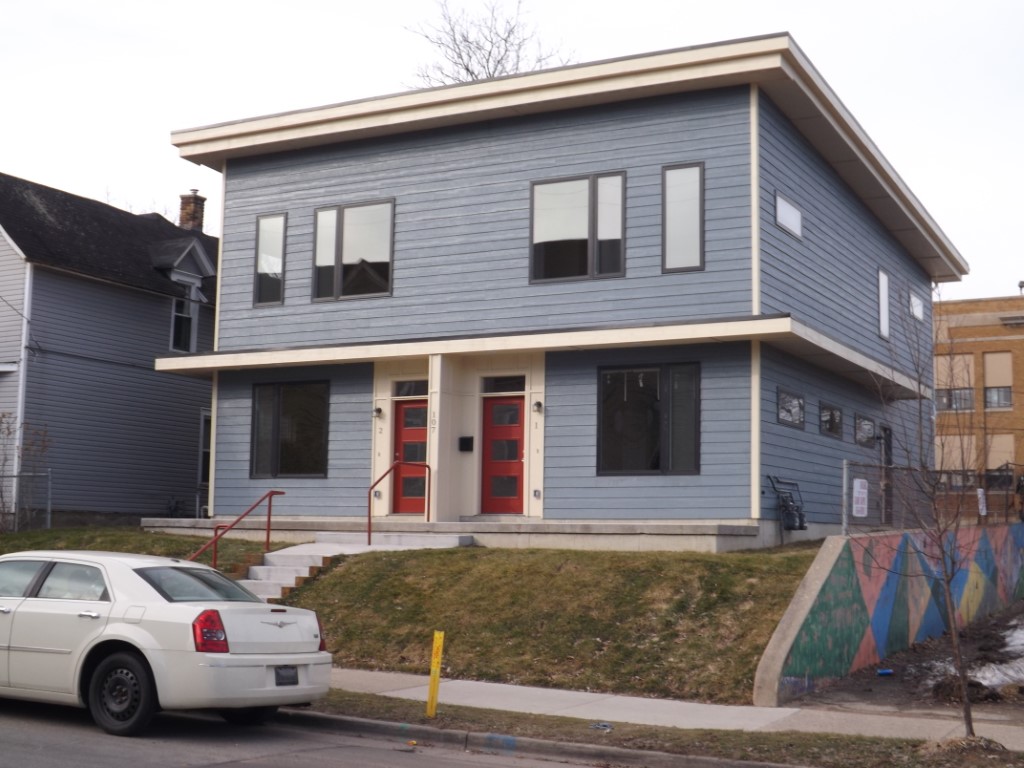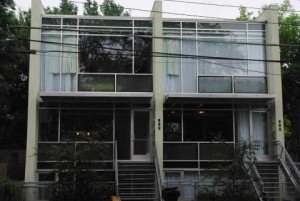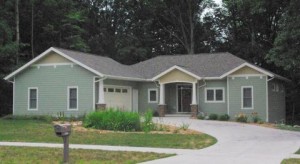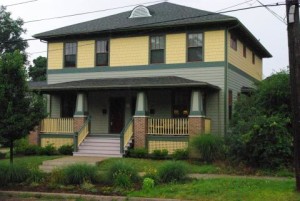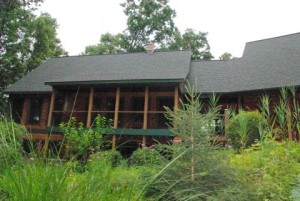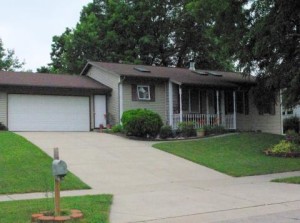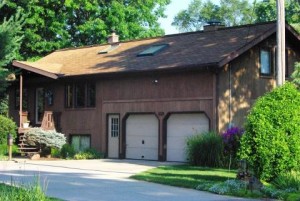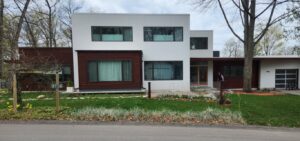
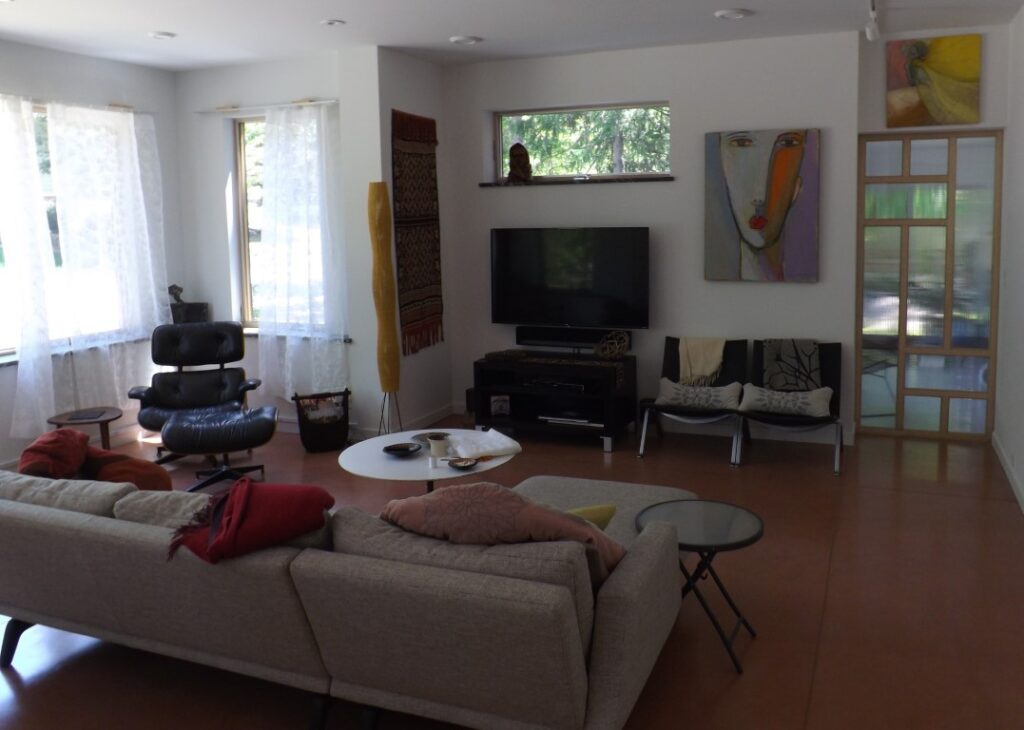

Duchess House. 2019, Design-build by K. Van Dyke and Associates, with architectural consulting by Elevate Studio.
Built on a previously developed lot, this high-performance custom home has a shallow frost-protected foundation system, insulated concrete form walls, colored concrete floors, in-floor radiant heat, a roof-top patio, and two rain gardens for storm-water management. There are three bedrooms and three full baths. The current studio space is set up for future conversion to a barrier-free bedroom and bath suite for aging-in-place.
Urban In-fill House: 2015-16, Design-build by K. Van Dyke and Associates. Developer Lost Alley LLC.
Single family home of 1800 square feet on a vacant urban lot between downtown Grand Rapids and John Ball Park. This four bedroom house includes high-performance insulation and HVAC package, and on-site storm-water management with a rain-garden.
Urban Infill Homes: Managed in 2014-2017 by K. Van Dyke and Associates. The Fulton Group developed the property.
Seven single-family homes and two duplex homes on vacant city lots close to the center of Grand Rapids and near the campus of Grand Valley State University.
Diamond Townhomes: Managed the project in 2007 with Bazzani Associates.
Designed by local architect Ted Lott , this townhouse style duplex received LEED for Homes certification. The structure is insulated concrete forms (ICFs) with steel joist and deck for floor and roof assemblies. More information about ICFs at www.turtlewall.com. The exterior utilizes large expanses of commercial glass, and the interiors are “loft” style with exposed bar joists, exposed ducts and piping and concrete floors. Storm water is managed by a gravel retention sump under the garage. More information at www.lott3metz.com.
Overmeyer House: 2007, as staff Project Manager with Bazzani Associates.
The structure is insulated concrete forms (ICFs) with conventional wood truss floor and roof framing. More information about ICFs at www.turtlewall.com. This LEED for Homes certified project utilizes geothermal heating, composting toilets, a “wet cell” garden for grey-water treatment, and all domestic water is provided by harvesting rain-water from the roof.
James Street House: 2006, as staff Project Manager with Bazzani Associates.
The first new construction in the historic Cherry Hill neighborhood in more than a half century, this new duplex was built on a residential lot where the original home had burned decades ago. Built to local historic preservation standards, this home utilizes the Superior Wall Systems precast insulated concrete walls (www.greatlakessuperiorwalls.com) for the foundation., is super-insulated and received LEED for Homes certification.
BJ House: 2003, K. VanDyke design/build.
This modified timber frame home is Michigan red pine inside and out. There are about 3200 sq. feet of living space, including the walk-out basement, a “loft” area, and an efficiency apartment above the garage. “Universal design” standards were used for the entrances and main floor, to allow “aging in place.” A sheltered front porch, a patio in the back, and a well-ventilated “three-season” room connecting them invites the residents to enjoy the natural space surrounding the home.
Springdale House: 1992, K. VanDyke design/build.
Designed for a single mom on a tight budget, this compact ranch has an insulated, pressure-treated wood foundation and daylight windows in the “basement,” which allows for bedrooms to be added as needed. When the original owner sold the home in 2003, the buyer’s inspection raised the question of why there was no sump pump in the basement sump crock. Answer: we never needed one; in 11 years that foundation admitted not one drop of water, the crock was dry.
Joan Ave House: 1987, K. VanDyke design/build.
This compact, multi-level 2100 s.f. home has only a 1250 s.f. footprint, including the two-stall garage. The structure is a pressure-treated wood foundation, with structural insulated panels (SIPs) for walls and roof. It has “volume” ceilings, an open floor plan, three bedrooms, 1-1/2 baths. Using on-site sanitation for wastewater, there is also a small “wet-cell” or “rain garden” for grey-water treatment. For more on SIPS and pressure-treated wood foundations see Essays.


